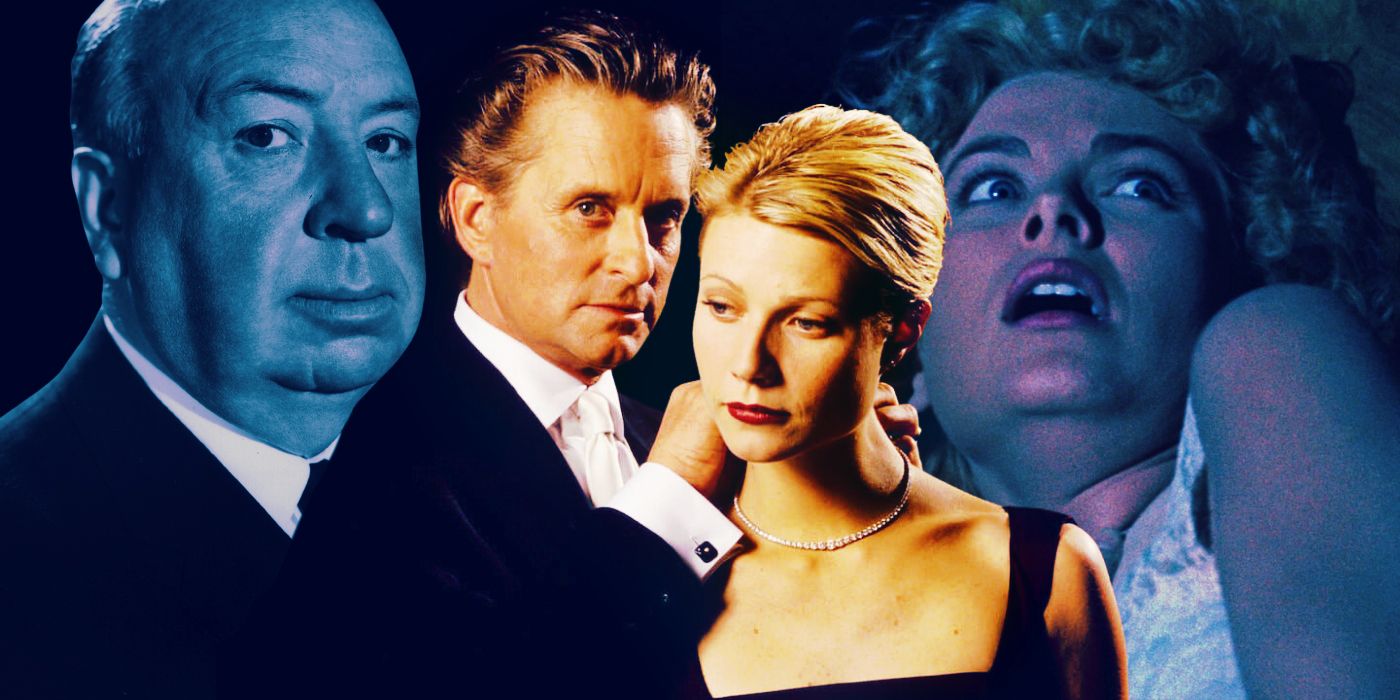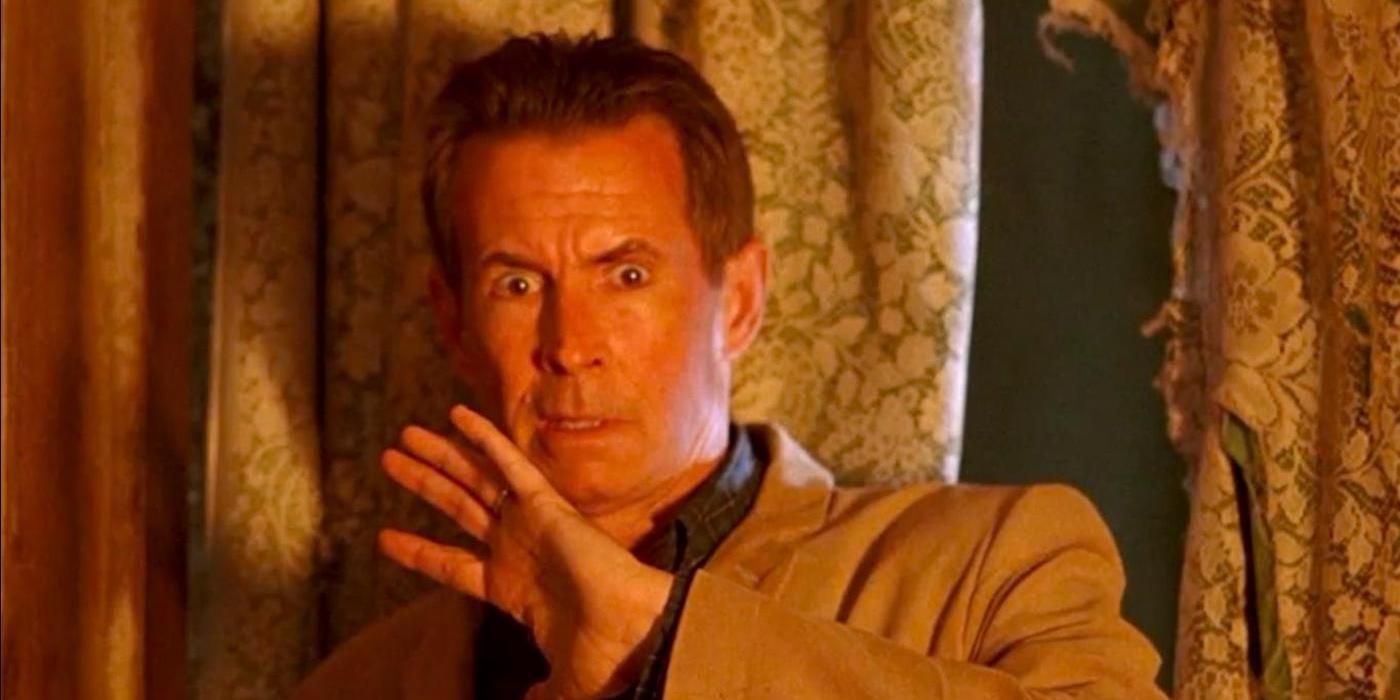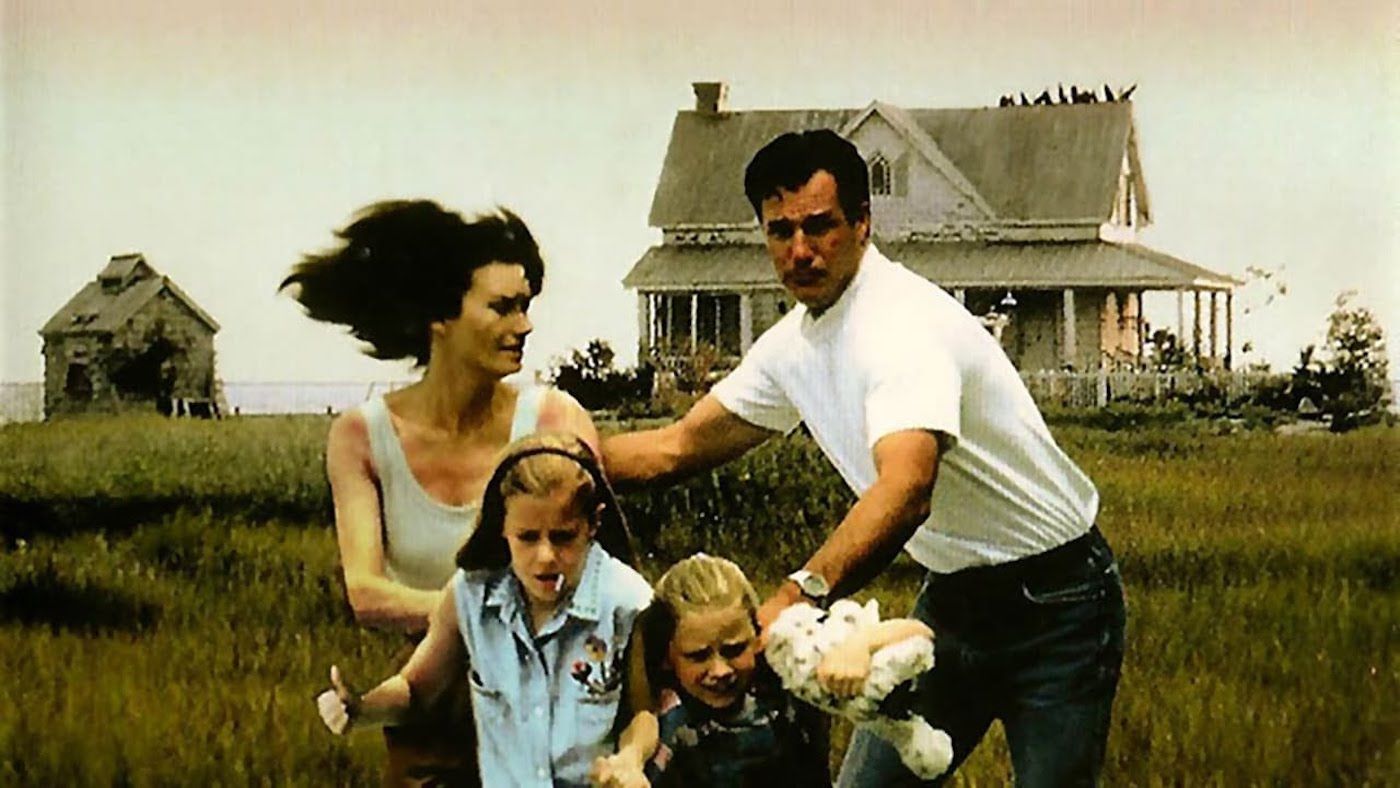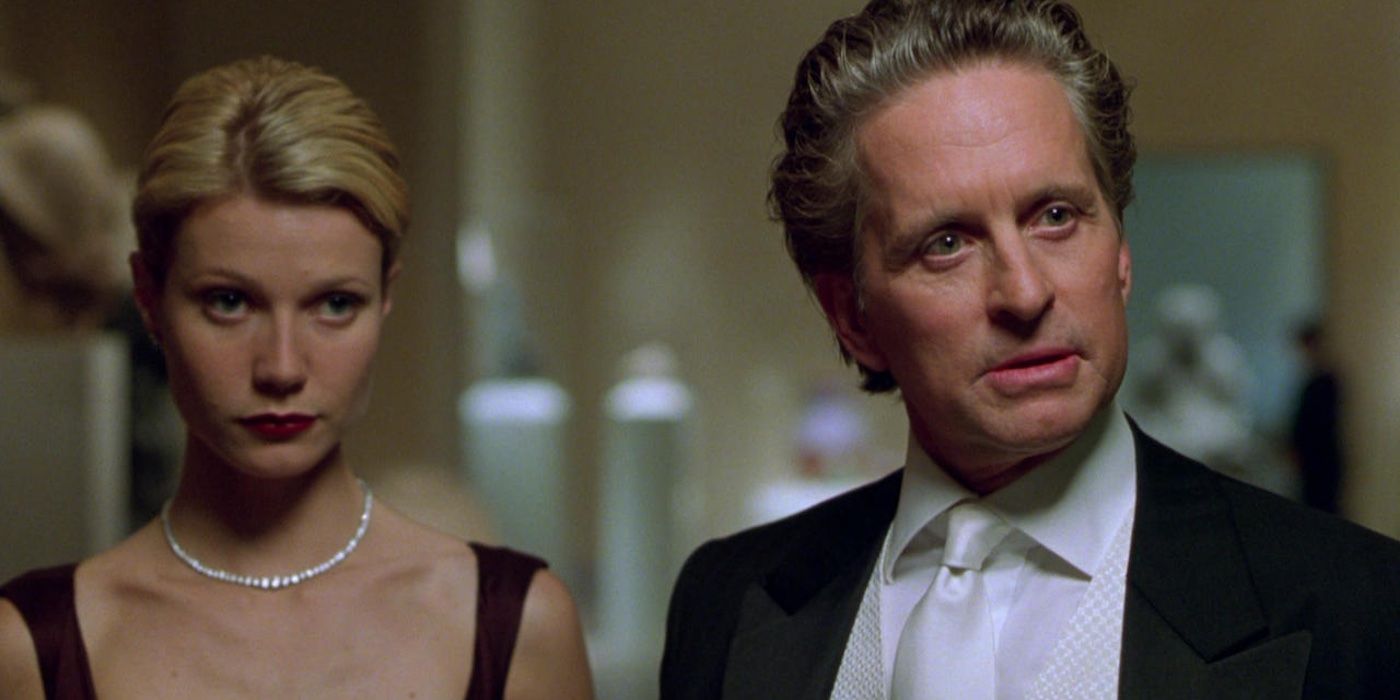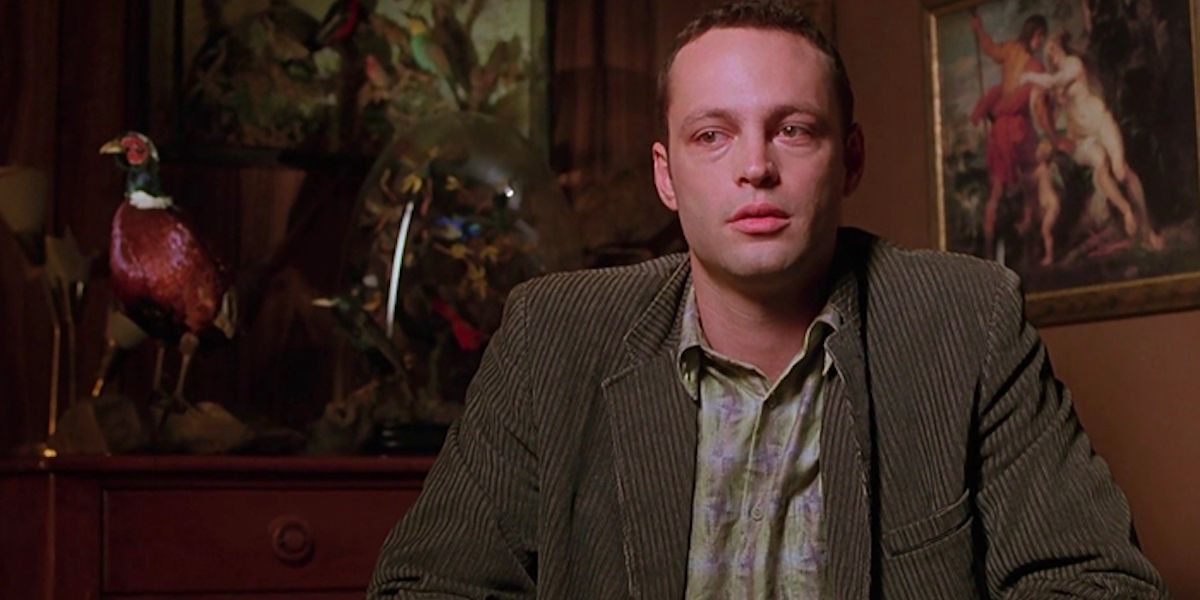With a new Robert Downey Jr.-led remake of Vertigo reportedly on the way, its mere existence is enough to remind you of a time when Hitchcock spin-offs, sequels, and remakes were much more commonplace. That’s right – it’s time to go back to the 1990s. It’s unclear why there were so many Hitchcock remakes during the Clinton years, but there were a ton – including a revamped Rebecca.
In some ways the pump had been primed for this onslaught of Hitchcock adaptations. A new version of Alfred Hitchcock Presents, which ran for three seasons on the kitschy USA Network in the late 1980s, had just concluded its run. Throughout the 1980s, a series of actually pretty-great Psycho sequels (and a slightly crummier made-for-TV-movie that was meant as a backdoor pilot for a series) had been released by Universal that followed up on the 1960 classic. Plus there was Alfred Hitchcock: The Art of Making Movies, a marquee attraction at the brand new Universal Studios Florida that opened along with the rest of the theme park in 1990 and featured new narration from Anthony Perkins. In fact, it’s this new theme park that really kicks things off for the Hitchcock adaptation resurgence.
The Final Norman Bates Film: 'Psycho IV: The Beginning'
In 1990, Universal’s Psycho IV: The Beginning debuted on Showtime. It skipped Halloween for some reason and aired on November 10. Technically, it was a sequel, but it included elements of a prequel and remake and was written by original Psycho screenwriter Joseph Stefano. (Like all of the other Psycho follow-ups, it was also way more entertaining than it had any right to be.) And unlike previous installments, this Psycho was filmed at the recently opened Universal Studios Florida, which at the time was positioning itself (much like Disney-MGM Studios down the road) as a real-life, honest-to-goodness working studio. Production was actually delayed to when the park was open, so that tourists could watch them film at the recreation of the Bates Motel and the iconic Bates house.
While Psycho IV received iffy reviews (“Would Alfred approve? Get serious,” sneered the Los Angeles Times), it got respectable ratings, with 10 million viewers tuning into the premiere. (This was especially good for Showtime, with its smaller subscription base than its premium cable competitor HBO.) It also offered up a new avenue for these Hitchcock-related features. Psycho III, theatrically directed by Perkins, had been a box office dud, but Psycho IV on TV had been a minor sensation. And over the years, it would become something of a cult favorite.
At the time, in a very weird profile of Perkins that emphasized the normalcy of his family life even though, during the filming of Psycho IV, the closeted Perkins got his HIV diagnosis, it was noted that there were “three more Psycho sequel scripts floating around, one co-written by Perkins.” None ever came to pass. Perkins died less than two years after Psycho IV aired.
The Direct-to-Video Hitchcock Updates
In 1991, a radically different take on Hitchcock’s 1943 classic Shadow of a Doubt was produced by Hallmark and Universal. Perhaps influenced by the growing buzz for Bret Easton Ellis’ American Psycho (it was even referenced in the above Psycho IV review, even though it wasn’t scheduled to be released until spring 1991), casts Uncle Charlie (now played by Mark Harmon) as a sadistic “Wall Street financier.” It also attempted to add some cool points by including former Hitchcock blonde Tippi Hedren in the cast. 1992 saw a TV remake of 1946’s Notorious, produced by ABC/Capital Cities and aired, it seems, on basic cable channel Lifetime. It’s all but been lost to the sands of time, although you can watch it (illegally and in piecemeal) on YouTube, although it airing on Lifetime should maybe tell you all you need to know.
A year after Notorious, Lifepod aired on Fox, a channel not known for its TV movies but one that you could always count on to chase a flashy trend. A reworking of 1944’s Lifeboat, Lifepod put a sci-fi bent on Hitchcock, following the survivors of a spaceship emergency. Co-written by Pen Densham, one of the architects of the well-received 90s Outer Limits revival and future Austin Powers director Jay Roach, it featured an above-average cast that included Robert Loggia and CCH Pounder, and it should be rewarded some respect for not slavishly attempting to recreate the original (the sci-fi conceit is nifty if not wholly successful). “All the bells, lights and whistles may charm some viewers, but the vidpic’s a hollow, just-OK actioner,” said Variety at the time, in the most Variety way possible.
'The Birds II: Land's End' and 'Rebecca'
By 1994, Universal and Showtime had circled back on its sequel-to-a-beloved-Hitchcock-classic it had pioneered with Psycho IV. But this time the results were far, far worse. The Birds II: Land’s End follows a new couple (a wooden Brad Johnson and Chelsea Field) who are besieged by avian evil. (Somehow the birds are worse actors this time around.) Hedren reprises her role from the 1963 original, a decision she later came to regret, to give it some continuity. Clearly the production was deeply troubled, with Halloween II director Rick Rosenthal taking his name off of the project (replaced by the classic “Alan Smithee” pseudonym). In the Entertainment Weekly review of The Birds II, critic Ken Tucker quipped, “He has good reasons to want his name erased from it. If it were me, I’d sue.” Apparently premium cable subscribers agreed; we never did see a Birds III.
Rebecca, again based on the Daphne du Maurier story (she also wrote the story that The Birds was based on) and ostensibly a remake of the 1940 Hitchcock Gothic masterpiece, aired as a miniseries in 1997. A German-British coproduction, it aired on PBS in America as part of Masterpiece Theater and featured an excellent cast led by Charles Dance, Emilia Fox, Faye Dunaway and Diana Rigg. This Rebecca was “nearly faultless, besides being a much fuller, deeper, richer and more Anglo-atmospheric treatment of Du Maurier’s novel than its predecessors,” gushed the Los Angeles Times review. But it was still released in the shadow of a classic by the master of suspense and these days is rarely discussed.
A Modern 'Dial "M" for Murder' Update and 'Rear Window' Remake
The following year, in 1998, Warner Bros. released A Perfect Murder, based on Hitchcock’s 3D thrill ride Dial “M” for Murder. Featuring an unbelievable cast that included Michael Douglas, Gwyneth Paltrow and Viggo Mortensen and nimble direction from The Fugitive director Andrew Davis, it was a serviceable adaptation that maintained the tone and tenor of the original while losing the out-and-out fun (cheekily filming it in 3D would have probably helped). Critics were mixed (Roger Ebert gave it 3 stars, noting the early middling reviews and said, “I think it works like a nasty little machine to keep us involved and disturbed”) but for an R-rated thriller, released in a prominent summertime slot, it did well, making more than $128 million worldwide.
That Thanksgiving ABC would air a remake of Hitchcock’s 1954 favorite Rear Window. This time, instead of contemporarily being confined to a wheelchair, the remake made our hero an actual quadriplegic, played by Christopher Reeve, who a few years earlier had suffered a horrifying horseback riding accident that left him permanently disabled. (The film was partially shot at the rehabilitation center in New York City where Reeve was being treated.) While the movie has some thrilling moments and an unexpectedly great cast that includes Daryl Hannah and Robert Forster, it failed to connect with critics. Variety referred to the remake as “ballyhooed” and said it was “so different in style and focus from its predecessor that it’s scarcely accurate to even call it a redo.” Reeve was ultimately nominated for a Golden Globe for his performance; it would be one of his last on-screen roles.
Gus Van Sant's 'Psycho'
In many of the reviews of the 1990s Hitchcock offshoots, you can tell that the critics and journalists were reviewing the idea of remaking or duplicating the originals as much as they were judiciously assessing the new movies themselves. There was a level of indignity that you can see from the writing at the time; it’s a constant, steady stream of how-dare-they? But nothing could compare to the outrage, befuddlement and vitriol that met 1998’s Psycho remake by Gus Van Sant.
Van Sant was coming off of Good Will Hunting, one of the rare arthouse favorites that crossed over and became a genuine box office juggernaut and awards favorite (it won Robin Williams and its two young screenwriters, Matt Damon and Ben Affleck, Oscars). He could do whatever he wanted. And he chose, for some reason, to remake Psycho. Vince Vaughn, Anne Heche, Viggo Mortensen, William H. Macy and Julianne Moore all signed on to roles made famous by the original film and Van Sant shot the remake in near-total secrecy on the Universal lot in Hollywood, where Hitchcock had made the original almost 40 years earlier. They utilized the same script by Stefano, tweaking only a few things here and there with his permission (like a more modernized amount of stolen money and changing “aspic” to “Jell-o”), and had the original film loaded on a DVD player next to the camera, to ensure the shot-by-shot fidelity be maintained.
The production’s secrecy, by the way, only added to the frothy speculation. In a glossy feature in Entertainment Weekly, writer Benjamin Svetkey said that the new film was “close enough to leave half of Hollywood wondering if perhaps a certain Oscar-nominated director may need some psychiatric counseling of his own. If nobody has ever attempted anything like this before, it’s because nobody has ever thought of a sane reason to try. So from the moment Van Sant announced his plans to counterfeit Hitchcock’s masterpiece, one obvious question has been looming over the production: Why?” In the lead up to the film’s Christmas release, Van Sant answered that question a number of different ways (he told EW that “I thought it would be fun”), which only added to the anger and confusion. (A couple of years ago Van Sant told Marc Maron his real reasons for attempting the impossible and that composer Danny Elfman, who would adapt Bernard Herrmann’s original score in stereo, was the first to tell the director that he was walking into a wood chipper.)
Psycho’s marketing campaign was equally mystifying. The first trailer didn’t feature any footage from the actual movie, maintaining the production’s tight secrecy but obscuring any ability to sell the movie, and bafflingly referred to it as, “A recreation of the nightmare that started it all.” A second, more evocative trailer showcased new footage alongside the dreamy, surrealist inserts that would accompany the murders in the new film and was much, much cooler. Intrigue eventually mixed with outrage. “It’s like Scientology,” Van Sant mused on the making-of documentary that accompanied the film’s initial home video release. “Some people are intrigued, some people are joining, some people are aghast and afraid.” Van Sant, at least, was filled with a prankster’s unbridled glee. He got away with the unthinkable and people were so upset.
When the film was released, theincredulity remained. On their weekly syndicated show, Gene Siskel called the film and the exercise of meticulously recreating the original “just weird.” Both critics concluded: “If you nt to see Psycho, rent th original.” Kenneth Turan’s review in the Los Angeles Times review summed up the remake: “It’s not sacrilege, not travesty, not profanation or desecration. The word is gimmick.” Leonard Maltin called it an “insult rather than a tribute.” Ouch. Financially it didn’t fare much better; the marketing was attempting to appeal to the renewed interest in the horror genre that stemmed from the breakout success of Scream (which had aped the original film’s brutal execution of who you believe would be the leading lady) but it didn’t work. Domestically, the film pulled in $21 million domestically against a $60 million production budget, before the costs of marketing, promotion and print manufacturing.
In the years since Van Sant’s Psycho was released, the reception has slowly started to thaw. Quentin Tarantino is a vocal supporter and Steven Soderbergh fascinatingly edited both Van Sant and Hitchcock’s versions together on his website into a version he called Psychos. (It was an experiment even more egghead-y than Van Sant’s.) Looking back on it, the furor around Psycho seemed to be part of the point. If you took it that seriously, then the joke was most definitely on you. There’s a joyful quality to the new Psycho, a sense of you-can’t-believe-they-got-away-with-it, that is totally infectious. It’s aged beautifully, as well, from the indie 90s movie costumes to the sumptuous color photography from Christopher Doyle. 20 years later, it’s still a scream.
The response to Psycho, coming at the end of a decade overstuffed with them, effectively killed off any other Hitchcock sequels or remakes. Most of the remakes going forward would choose to pay spiritual homage to the master and his works instead of actually, legally, remaking them. And it’s a shame, too. Because while few of them could compete with what came before, they were always audacious and fun, embodying a kind of corporate fearlessness that has been smoothed away and replaced by a commitment to duller and duller franchises. The Hitchcock remakes and sequels of the 1990s were also, in words of the dearly departed Gene Siskel, “just weird.”

